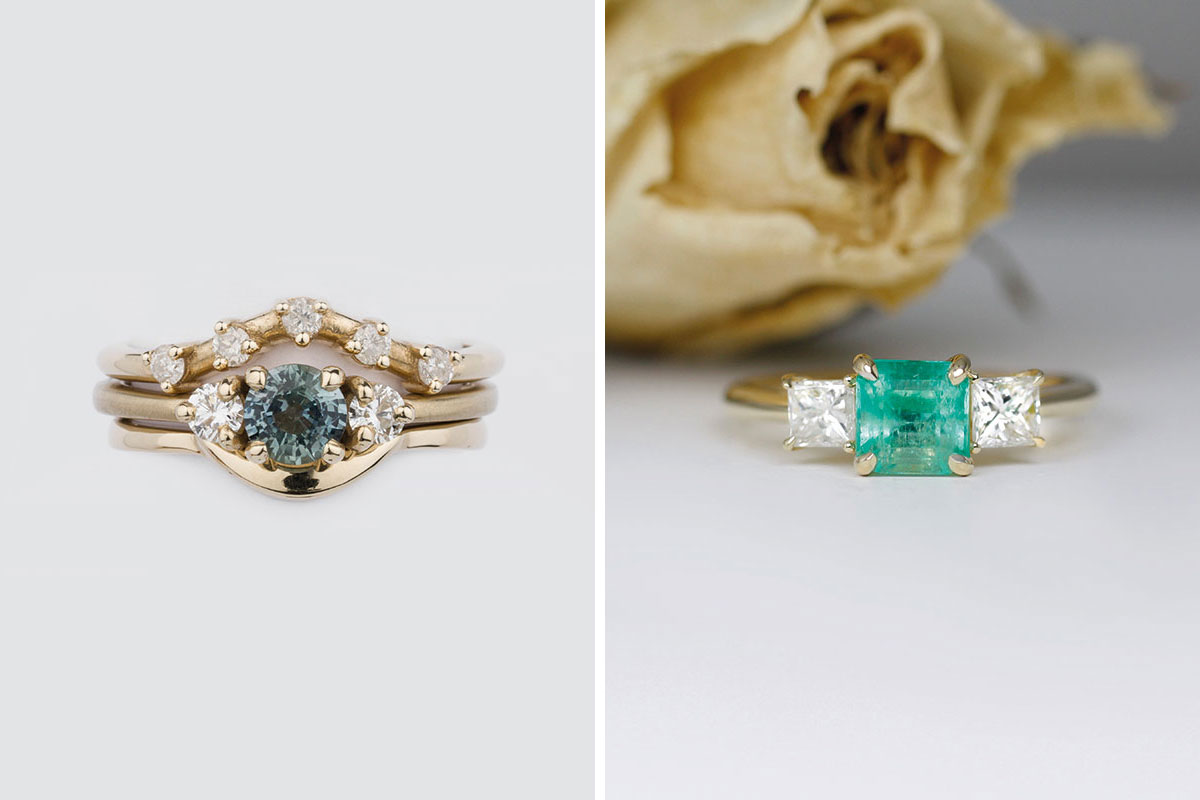Confused by carats? Think solitaire is just a card game? With jargon that sounds like a whole new language, it can be hard to know where to start when it comes to wedding jewellery. Thankfully, Scottish jewellers will set you off on the right track
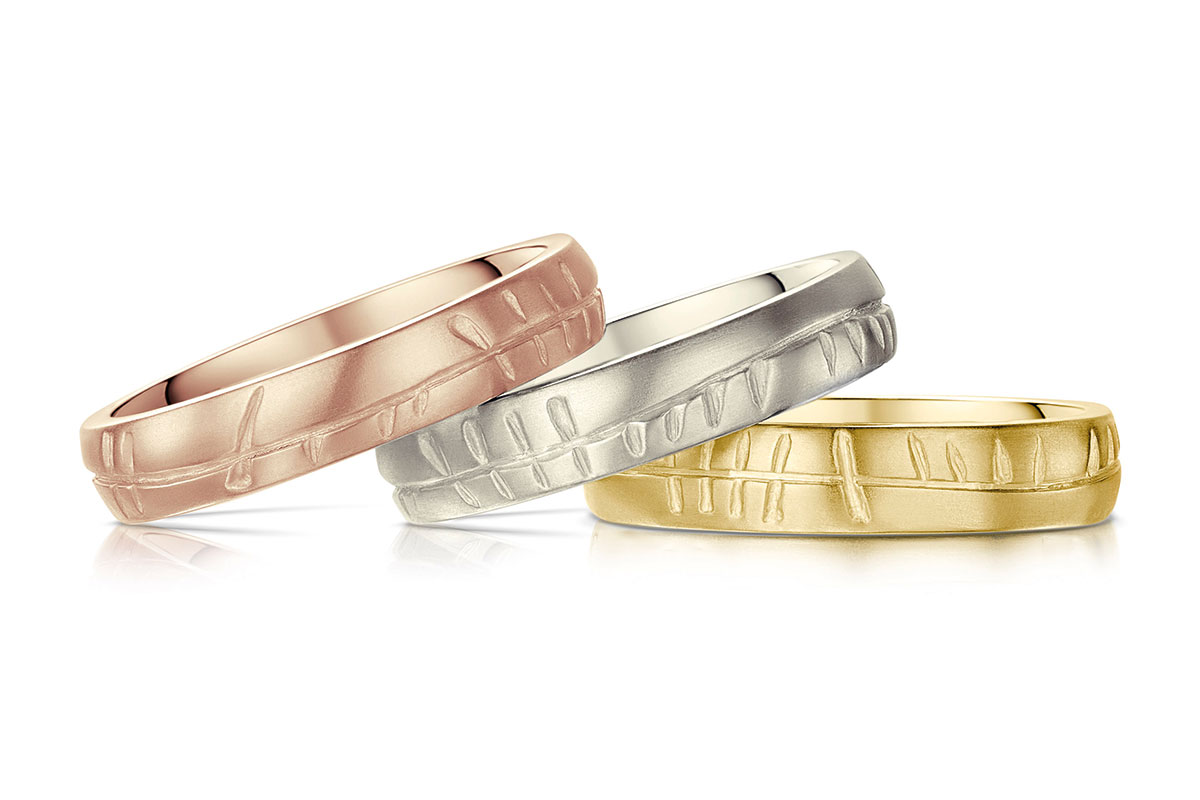
Metals
First things first: let’s talk karats (confusingly abbreviated to ‘ct’). “Karat refers to the purity of gold,” says Sheila Fleet of esteemed Orkney jeweller Sheila Fleet, explaining that while the purest form of gold is 24ct, this is actually too soft for jewellery. “We work with both 9ct and 18ct yellow, white and rose gold.
“Platinum is a good alternative to gold – it’s durable and won’t tarnish. At 95% purity, it’s also a great choice for those with sensitive skin. Silver is a softer metal and scratches easily, but with a good amount of care it can still last a lifetime. Plus, it’s a more affordable alternative.
“Take care when mixing metals, since a harder-wearing metal can cause your other band to wear quicker. If mixing metals, choose the same karat.”
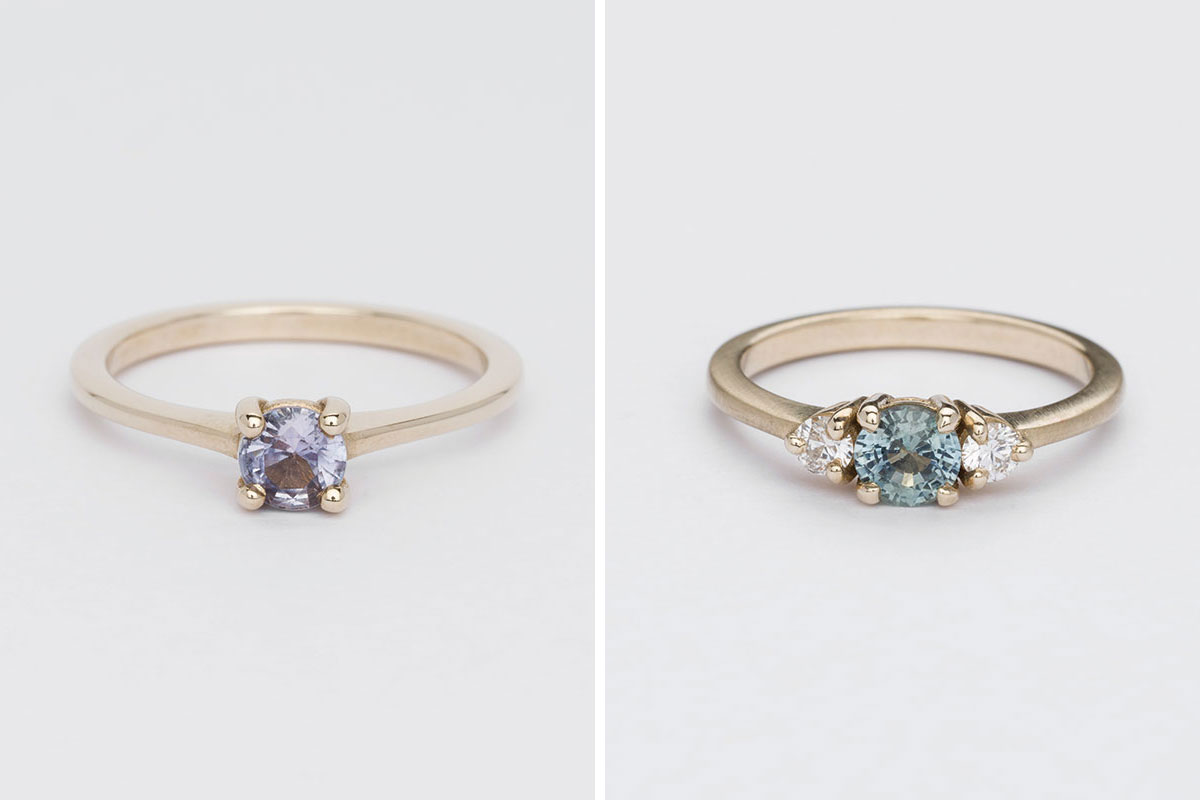

Ring styles
Designer and maker Jane Harrison of Glasgow-based Jane Harrison Jewellery knows all there is to know about ring styles, and was happy to give us the lowdown.
“A solitaire is a ring with just one stone, while a trilogy has three; quite often, the centre stone will be bigger, flanked by slightly smaller accent stones. A halo is one that has a central stone framed by smaller stones (these will sometimes be referred to as clusters).
“Milgrain is a technique which is used to apply a decorative edge to a setting or ring, giving the appearance of small beads and making the item look more ornate. Scintillation is basically a fancy way of talking about how the stone sparkles, referring to small cuts on the stone that reflect the light.”


Ring fit
“The profile (or shape) of a wedding ring is determined by the shape of its cross-section,” explains Debbie McKernan of Laings. “It describes the side view or shank, the shape of the band of the ring. D-shaped describes a ring which is flat on the inside with a rounded top section.
“Court is the name for when the material is rounded evenly on the inner and outer section of the ring. Comfort fit is similar to a court profile, with the inner section of the band curved, and allowing a smoother slide onto the finger. There are a number of other profiles too, but the D-shape is most popular with ladies, while gents often prefer the court or comfort fit.”
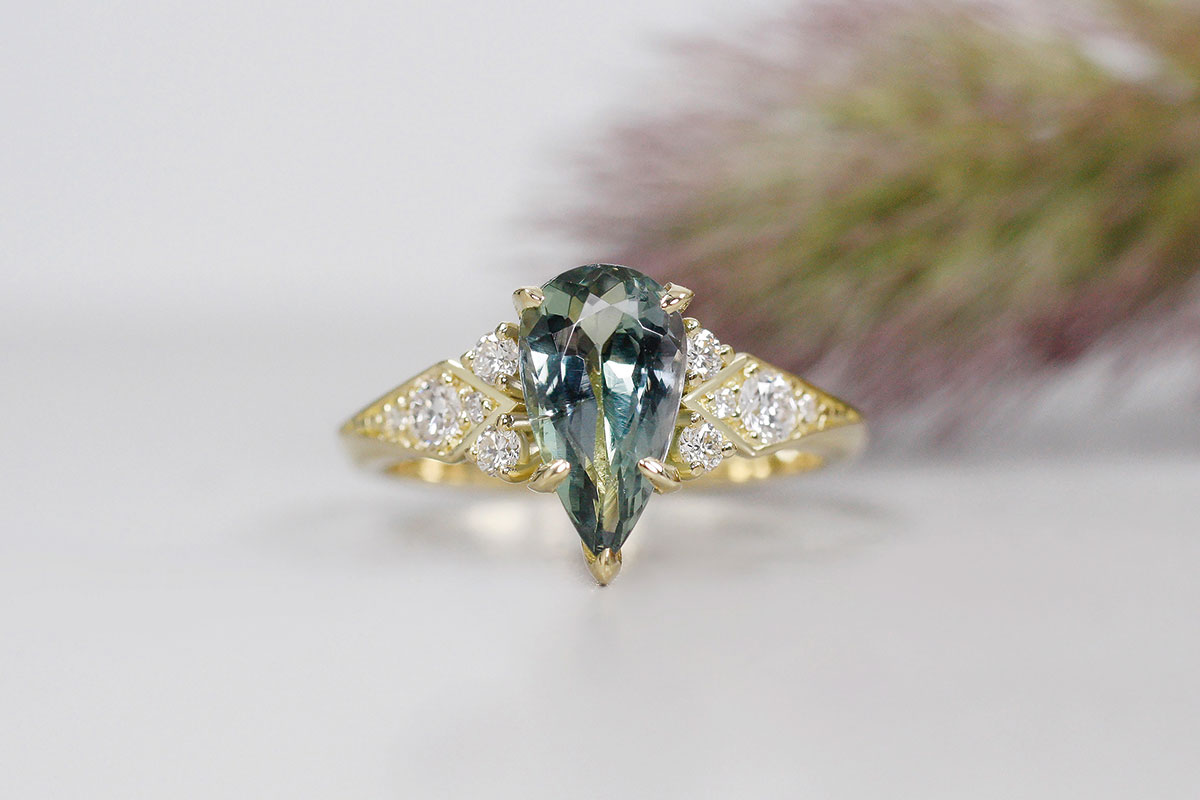

Stone shapes
Many people choose the classic round shape that’s known as the sparkliest option. It might look round from above but the stone is actually cut into a cone shape, allowing the light to enter it in a way that helps to achieve maximum brilliance.
If round isn’t for you, but you don’t want to sacrifice the glitter, consider the princess cut. From above, such stones look like a rectangle or square, but are actually pyramid-shaped below, which helps to amp up the shine. Among myriad other options, there’s the popular pear or teardrop shape, which can have a lengthening effect, making it an excellent choice for shorter fingers.


Stone settings
“Claw is the term used to describe any stone supported and held with a prong,” notes Sarah Raffel of bespoke Glasgow jeweller Brazen Studios. “This is a very common type of setting – it allows the stone to be shown off, and usually seen from the top and the sides. We do recommend that claws are inspected every so often to ensure they aren’t worn or in need of re-tipping.
“A channel setting puts stones in a row, usually down the shoulder of the ring. It allows the stones to sit side by side in a channel with a strip of metal down each side. Bezel is a clean, modern way of setting stones of any shape. The metal surrounds the stone, adding a frame. It’s very practical for everyday wear and will usually have nice clean lines. The only drawback is that some stones won’t be shown off to their best.”
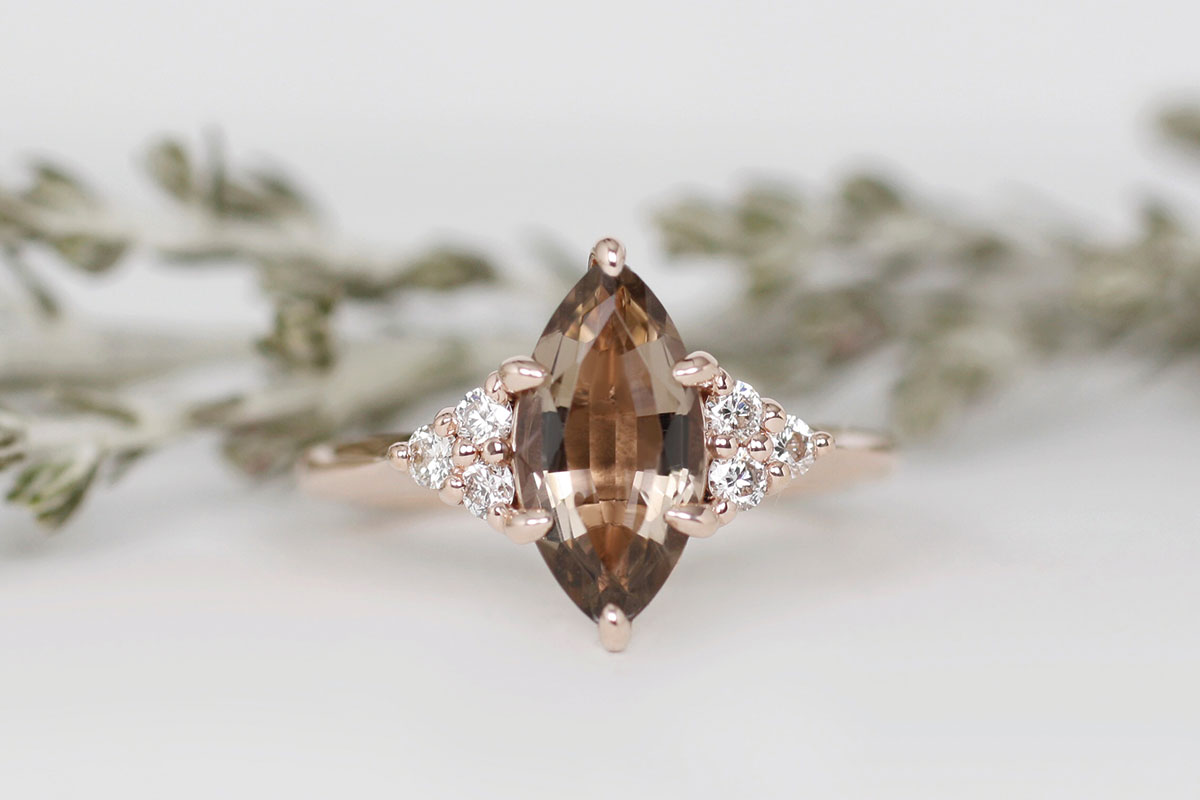

The four Cs
It’s no surprise that diamonds are still as popular as ever: you simply can’t beat them for brilliance. This guide from engagement ring specialists Angelic Diamonds will help you get your head around the jargon jewellers use to describe our favourite gem.
Cut – “This refers to a diamond’s symmetry, proportions and polish. It should not be confused with its shape.”
Clarity – “This describes a diamond’s internal properties, or inclusions. The fewer inclusions a stone has, the more appealing (and expensive) it is.”
Colour – “To the naked eye, most diamonds are colourless. Under closer inspection, you may see some subtle yellow and brown tones, particularly in cheaper stones.”
Carat – “Diamonds are weighed in carats (and fractions of a carat). This is not the same as karats, which measures the purity of gold.”
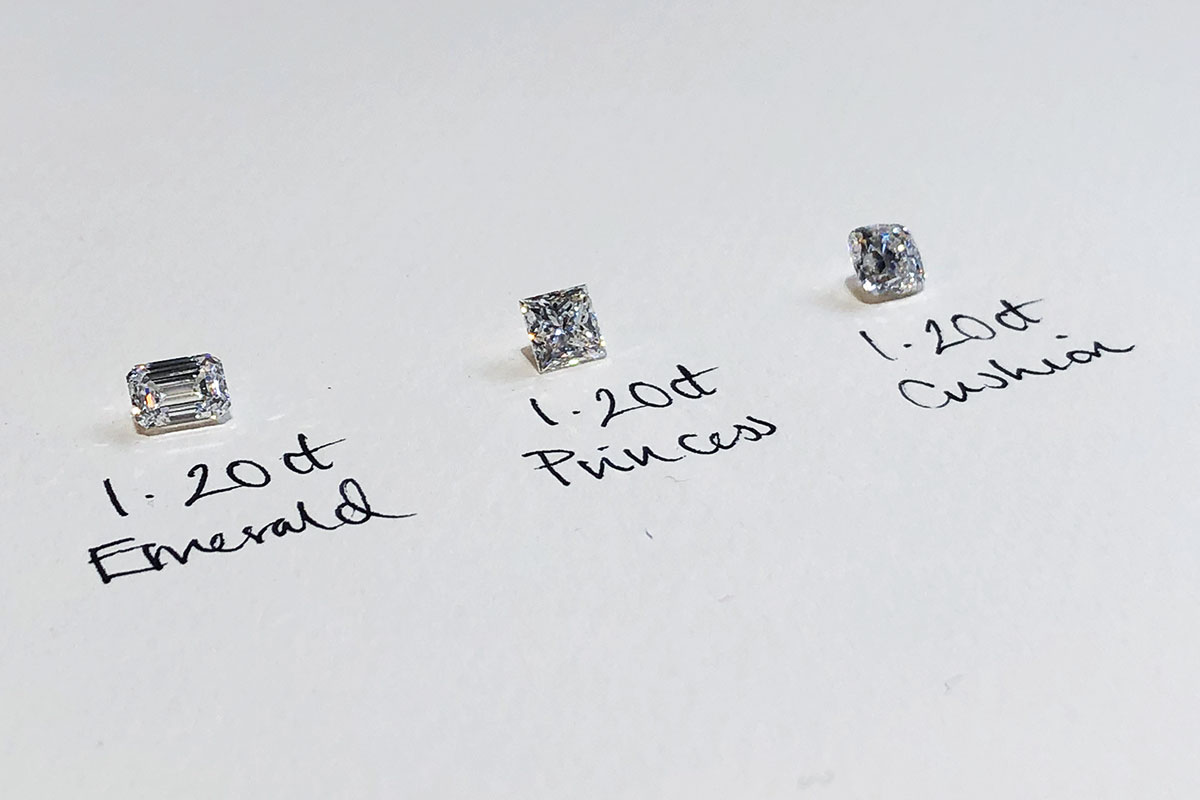

Ethical diamonds
In recent years, the ethical considerations of what we buy have become more important to many people, with increasing numbers of us actively seeking out companies that are socially and environmentally responsible. This extends to jewellery as well, according to Laings’ Debbie McKernan.
“We cannot stress enough just how important it is to buy high-quality, ethically sourced diamonds,” she says. “Eliminating conflict diamonds from the global supply chain will improve the lives of mining communities around the globe, as well as offering you peace of mind.
“The Responsible Jewellery Council is an independent body that works to ensure sustainable standards and practices are upheld within the jewellery industry. Laings is a member – whenever we purchase any goods we make sure that our suppliers across the globe are members too. That way, we know that all our gemstones and metals are sourced ethically.”
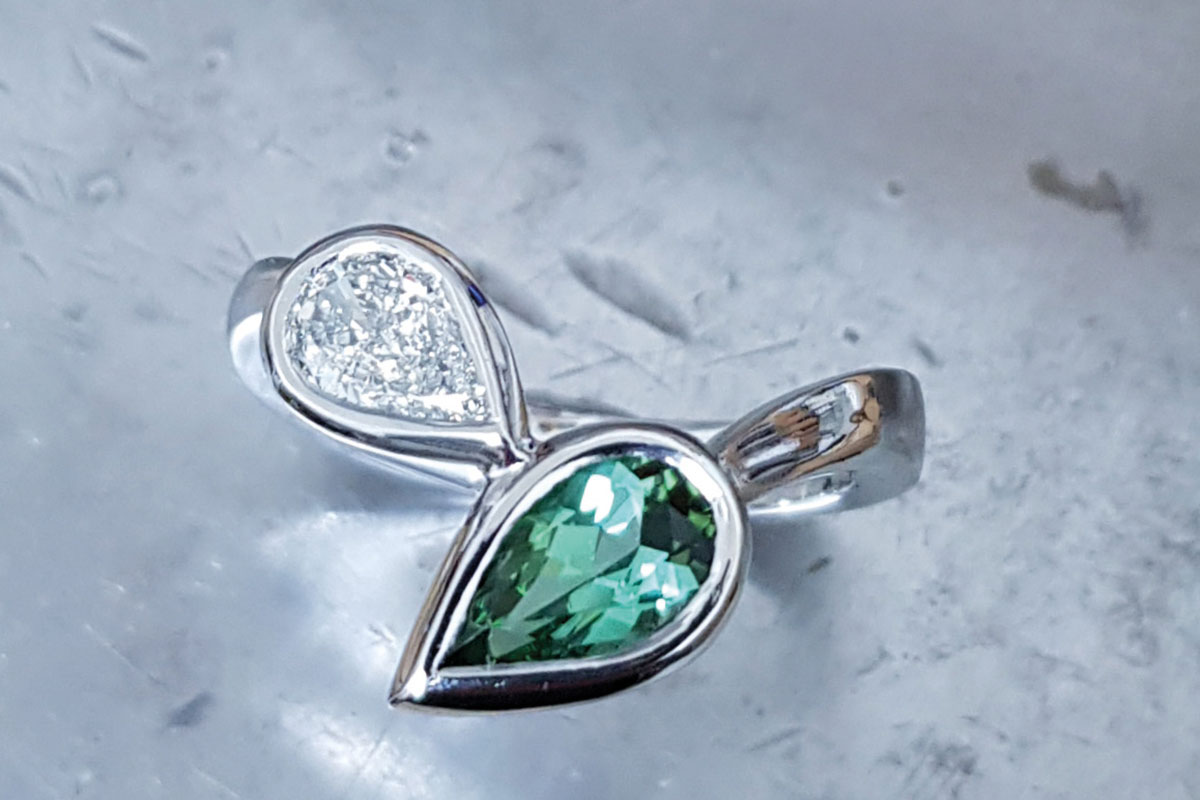

Coloured stones
Old favourites like emeralds, rubies and sapphires can come in a greater range of colours than you might imagine: while the purest emeralds will be a vivid, dark green, there are chartreuse variants of the stone, and rubies can be found in shades of red ranging from crimson to a pretty pale pink. Sapphires are blue, of course, but they can also be green, orange, yellow, purple, pink, colourless and even black.
“Coloured stones should be sold with appropriate advice on how to care for them, and this may also be a consideration when setting them,” advises Jacqui Grant of Lava Jewellery, a contemporary jewellery studio in Aberdeenshire. “Because of their hardness, diamonds, rubies and sapphires are good options for rings that’ll be worn every day.”
